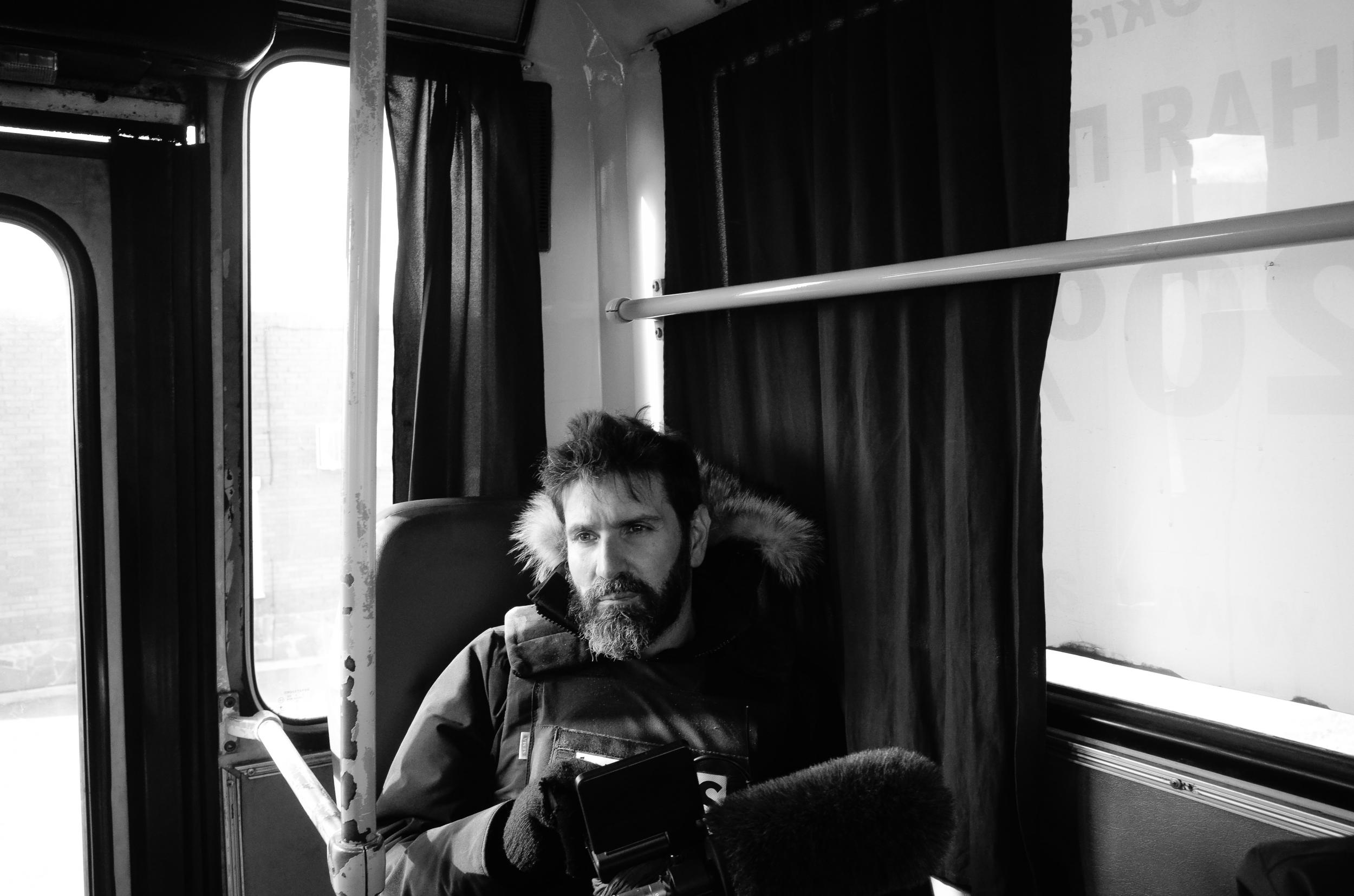A war reporter's story: close combat in eastern Ukraine
In the first of our series of testimonies from Rory Peck Awards nominees, French cameraman Olivier Sarbil describes life on the front line in war-torn eastern Ukraine. Sarbil was nominated for a series of reports he filmed in 2014-15, which show intense fighting around Donetsk and Debaltsave

I've been covering eastern Ukraine as a news cameraman since the start of the armed uprising in early 2014. I witnessed the conflict descend into a bloody and bitter war, with heavy artillery from both sides devastating the civilian population. I wanted to illustrate the intensity of the fighting and bear witness to the impact on those caught in the crossfire.
Working in eastern Ukraine was extremely challenging. The rebel held territories were lawless and unpredictable and there was no clear chain of command between the various rebel battalions, which made access difficult. On the Ukrainian side, with volunteer battalions fighting alongside the National Guard and the army, the command structure was also far from clear. I had to cultivate close contacts with individual field commanders on both sides to get access to the frontline.
Fighting raged throughout the so-called ceasefire at the end of 2014. I wanted to show what this looked and sounded like, so when I reached Donetsk in October I headed straight to the airport – the most fiercely embattled area in eastern Ukraine at that time. Artillery, snipers and booby traps made filming hazardous, but I wanted to show the battle was raging on despite the ceasefire. I was one of the few members of the mainstream media to get close combat footage; most battlefield access was reserved for the rebels’ own cameramen, or for Russian journalists. Rebels eventually captured the airport in January 2015.
My second report showed the scale of the rebels’ new offensive following the complete collapse of the ceasefire in early 2015. The rebels were on the warpath and the Ukrainian government-held town of Debaltseve was their main target. The rebels’ desire to hide the scale of their aggression made filming a challenge. I asked one of my commander contacts for access to the frontline, and after days of negotiation I was told simply to follow him, with no other details given. Hours later, deep in rebel territory, we arrived at an open field and saw the artillery battery and the rebels dug in, in the freezing cold. I was able to get pictures that showed not only the intensity of the firepower the rebels were unleashing on Debaltseve but also the tough, World War II-style conditions of life on the frontline.
A week later I was on the other side, inside Debaltseve. This time I wanted to show the desperation of the troops and civilians inside the besieged city, but switching sides in a conflict can raise suspicions. The Ukrainian troops knew we’d come from the enemy side and not everyone was happy to see us. Logistically, getting into Debaltseve was also difficult. The only access road in and out the city was known as “the gauntlet of fire”. Kiev insisted its forces could hold Debaltseve, but when we arrived the soldiers’ faces told a different story. It was an extraordinary and intense shoot. I had filmed beleaguered troops and terrified civilians in Ukraine many times before, but this was the first time I’d experienced being with fighters firing artillery shells and then just a few days later be inside the town where those shells were landing. It was surreal.
In 2011 I was badly injured in Libya when a group of rebels I was filming during the battle for Sirte was hit by an RPG. I spent eight months in hospital in France – I didn’t walk for six months and I lost part of one hand. The experience gave me a new perspective on conflict, and a greater insight into the experiences and the emotions of the people I film. I hope viewers can feel some of this through my images.
The Rory Peck Awards 2015, hosted by Sky News' Alex Crawford, will be held on Wednesday 18th November at London's BFI Southbank. Tickets available at rorypeckawards.org.

Join our commenting forum
Join thought-provoking conversations, follow other Independent readers and see their replies